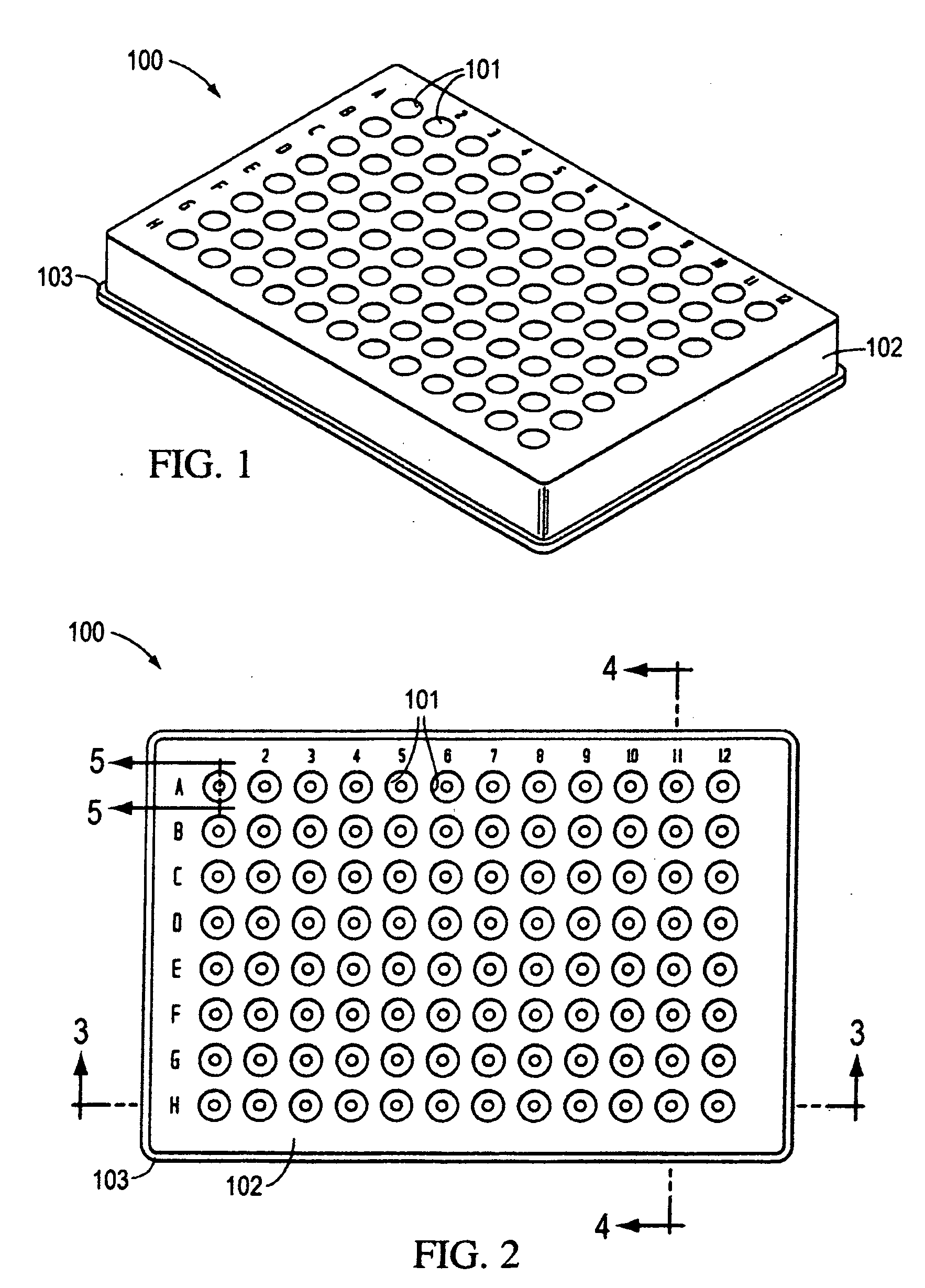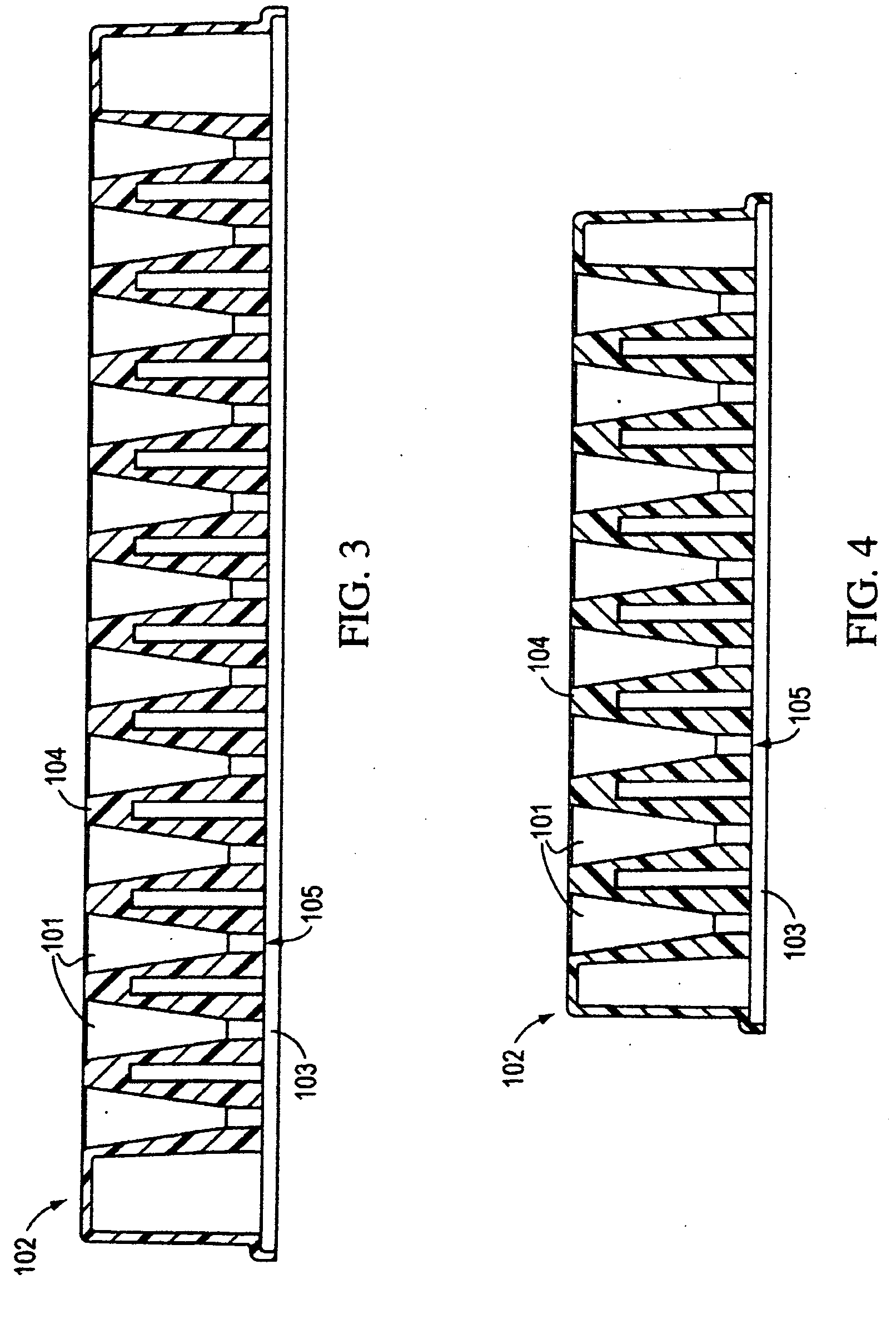Microplate and methods of using the same
a microplate and micro-plate technology, applied in the field of micro-plates and methods of using the same, can solve the problems of large number of experiments, high cost, and high labor intensity, and achieve the effects of reducing background interference, improving analytical data quality, and reducing labor intensity
- Summary
- Abstract
- Description
- Claims
- Application Information
AI Technical Summary
Benefits of technology
Problems solved by technology
Method used
Image
Examples
Embodiment Construction
[0047]Reference will now be made in greater detail to exemplary embodiments of the invention, examples of which are illustrated in the accompanying drawings. Wherever possible, the same reference numbers will be used throughout the drawings to refer to the same or like parts.
[0048]As seen in FIGS. 1 and 2, an exemplary embodiment of a microplate 100 according to various aspects of the present teachings defines a body 102, a microplate skirt 103, and a plurality of wells 101. The microplate skirt 103 generally is configured to rest against a surface on which the microplate 100 sits, thereby lifting the body 102 and wells 101 slightly above such surface. The microplate skirt 103 may extend substantially around a perimeter (e.g., outer edge) of the microplate 100, as illustrated in FIGS. 1 and 2.
[0049]FIGS. 3 and 4 are cross-sectional views of FIG. 2 taken from 3-3 and 4-4, respectively. The bottom portion 105 can also be seen in FIGS. 3 and 4, and forms the closed end of the wells 101...
PUM
 Login to View More
Login to View More Abstract
Description
Claims
Application Information
 Login to View More
Login to View More - R&D
- Intellectual Property
- Life Sciences
- Materials
- Tech Scout
- Unparalleled Data Quality
- Higher Quality Content
- 60% Fewer Hallucinations
Browse by: Latest US Patents, China's latest patents, Technical Efficacy Thesaurus, Application Domain, Technology Topic, Popular Technical Reports.
© 2025 PatSnap. All rights reserved.Legal|Privacy policy|Modern Slavery Act Transparency Statement|Sitemap|About US| Contact US: help@patsnap.com



